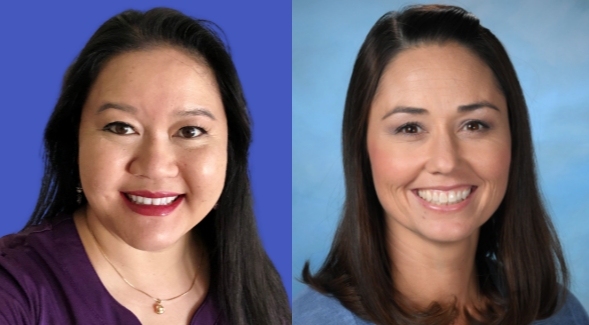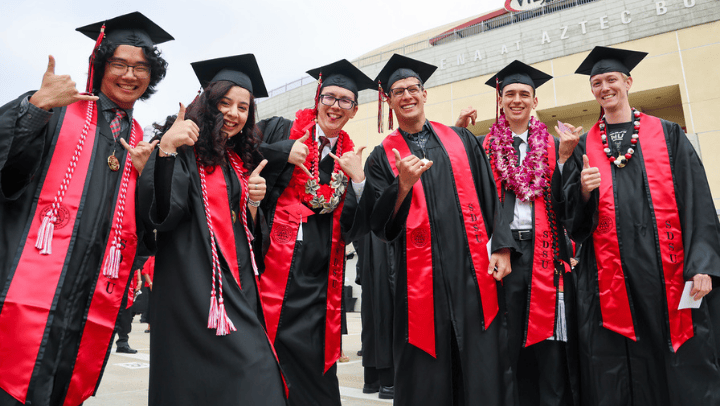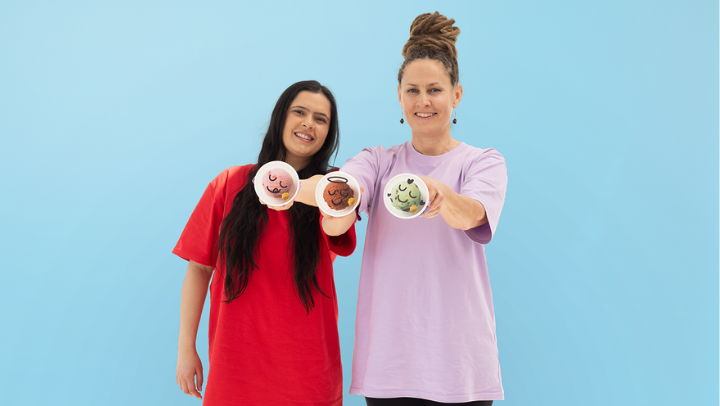Two Alumnae Earn Presidential STEM Teaching Award
National honorees Khamphet Pease and Marlys Williamson are both graduates of SDSUs teaching credential programs.

Two graduates of San Diego State University’s School of Teacher Education have received the U.S. government’s highest honor for science, technology, engineering and mathematics (STEM) teaching.
Homegrown San Diego-area educators Khamphet Pease (’05) and Marlys Williamson (’05, ’06) were named among 102 recipients of the Presidential Awards for Excellence in Mathematics and Science Teaching (PAEMST). They were the only teachers from California honored in the Feb. 24 virtual ceremony.
"It makes me proud to be an Aztec for sure,” Williamson said. “SDSU is preparing our future teachers to make a difference for our students and rise to the occasion.”
Here is a look at each award recipient:
An American Dream Fulfilled
While a makeup visit to Washington, D.C. is in the works, Phet Pease’s students and colleagues at San Diego’s Wilson Middle School have already given her a day she’ll never forget. It was Feb. 9, when word started to spread around her school site that she had received the PAEMST honor.
“I was walking the halls that day and every kid I knew — even the kids I didn't know — were saying, 'Congratulations Mrs. Pease!’ or ‘Tell Biden I said hi!'” said the alumna of SDSU’s teaching credential program and Noyce Master Teaching Fellowship. “Every period I had to disclose why everyone was congratulating me that day. All my students just spontaneously gave me a standing ovation.
“It was just so heartfelt and congratulatory that I got emotional. I had kids telling me they wanted to be just like me.”
For Pease, who grew up in San Diego’s City Heights neighborhood and attended Wilson Middle School herself, that affirmation was particularly meaningful. Her own childhood story — coming to the U.S. as a Laotian refugee — no doubt strikes a familiar chord in a community heavily made up of immigrants and refugees from Latin America, Southeast Asia, Africa and elsewhere.
"We came here with nothing,” Pease said. “My dad always tells a story that when we arrived in America, they had $1 in their pockets. We were at the airport and I was thirsty, and so Dad sacrificed the only dollar to his name to buy me a bottle of water.
“(My parents) made so many sacrifices to come here to give my family an opportunity. Receiving this honor is the fulfillment of my American Dream.”
Pease now works to empower her students to achieve theirs.
Pease was honored for her innovative STEM curriculum that sees Wilson students working together on projects such as designing apps, 3D printing and building robots. She also founded the school’s highly successful competitive robotics club.
She stressed that the PAEMST award was not a personal accolade, but a validation of those who supported her on her journey as an educator.
“This is for family and friends, all the professors that I met in my credential program, my fellow colleagues and definitely my students,” Pease said. “It’s for the Noyce Fellowship Program, which was five years of my life spent doing research and implementing proven strategies to be an effective teacher.
“They have molded and shaped me into the type of educator that I am, which happened also to be something that the president now recognizes as outstanding teaching. They always say it takes a village to raise a child — it took a village to raise me as an educator."
Sparking Kids’ Curiosity
Marlys Williamson’s fifth-grade science classroom at Wolf Canyon Elementary in Chula Vista always revolved around hands-on learning. So when the COVID-19 pandemic hit in 2020 and students were sent home, she faced a moment of crisis.
“That was the biggest panic moment for me,” she recalls. “How can I reach students in their homes, while they’re in their PJs with their dogs and their stuffed animals?”
Her solution was to gather all the supplies she could from her classroom and get to work.
Williamson set up an assembly line to pack science bags for each of her students. Soon, parents were swinging by to pick up sacks full of straws, craft sticks, cups, even owl pellets — everything they needed to conduct science experiments from the other side of a Microsoft Teams window.
It’s that level of dedication that earned her national acclaim. Williamson called receiving the PAEMST honor “humbling,” especially in light of the pandemic.
“This makes me think about all the computer coders, software engineers, doctors and vaccine makers who made it possible for me to teach,” she said. “Who were the teachers that inspired them? Because 10 years ago, this wouldn’t have been possible. I hope I’m inspiring the next generation of people who are going to make a difference in fields like that.”
A former student in the Chula Vista Elementary School District where she has worked since 2007, Williamson recently left the classroom in an effort to broaden her impact. She now works as a science coordinator in the district office, supporting more than 900 teachers.
What made Williamson’s own classroom special was the way she fostered curiosity. She said her lessons were designed to encourage students to ask more questions rather than dwell on being fed the right answers.
“I'm never the keeper of information for my students,” Williamson said. “They are the ones doing the solving and the wondering."
SDSU made a significant impact on the educator she is today. Both of her parents were teachers and SDSU alumni. Williamson speaks glowingly of the education she received as a liberal studies major and later in her teaching credential program under cohort leader Marva Cappello, professor in teacher education.
“She always inspired us and saw the best in us,” Williamson said of Cappello. “In my credential program, it was so great to learn the strategies, go and try them, apply them and then take them back into your student teaching."



